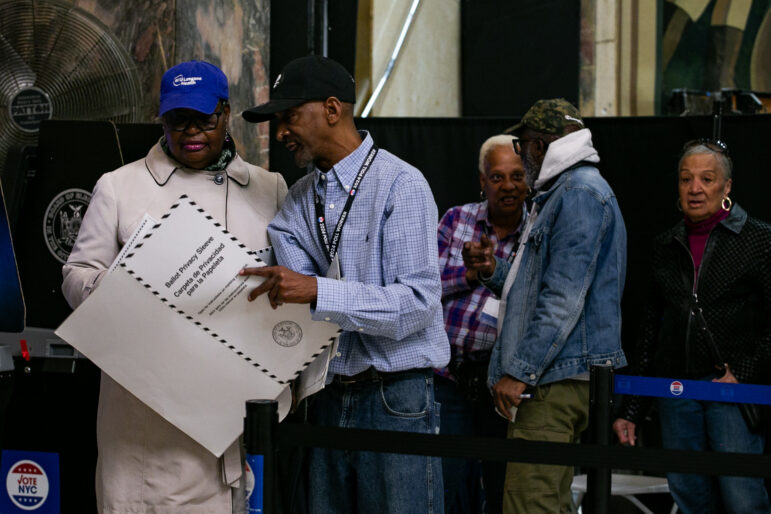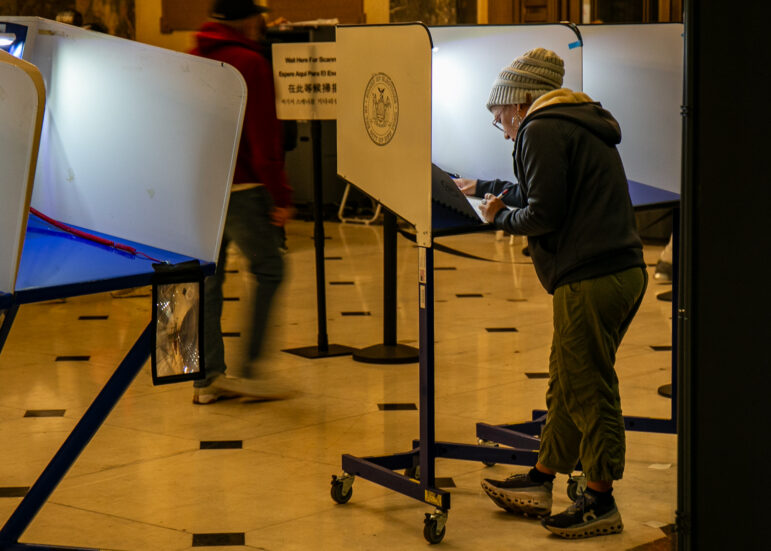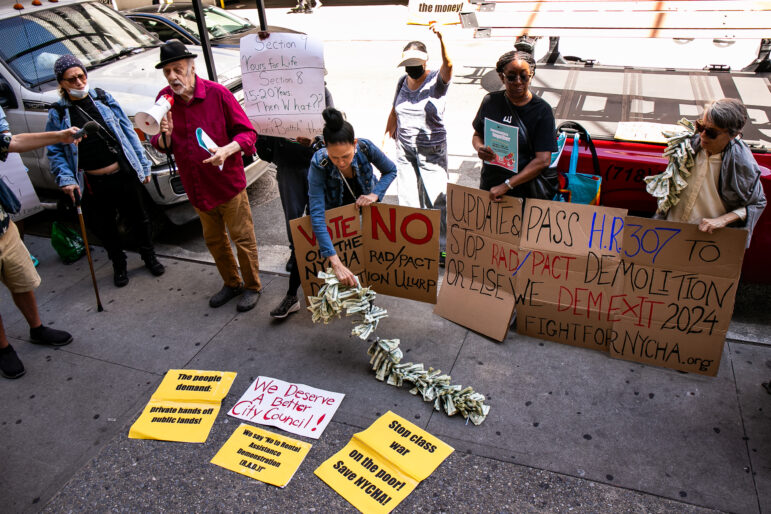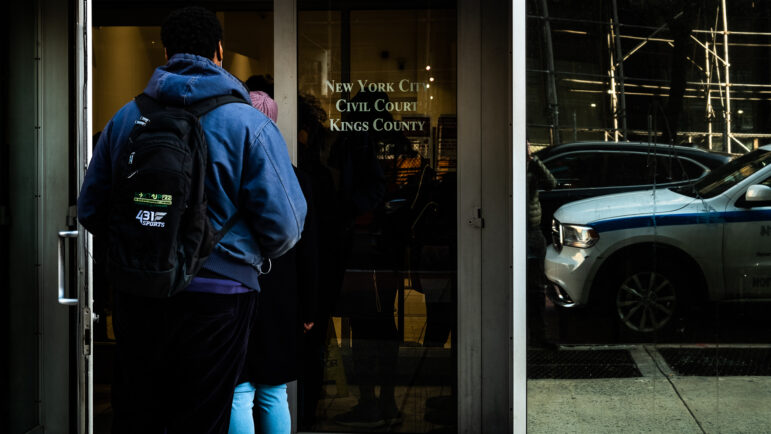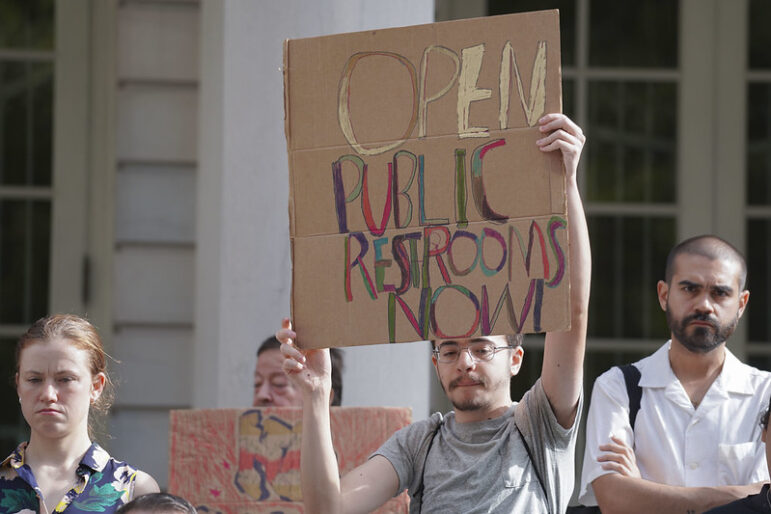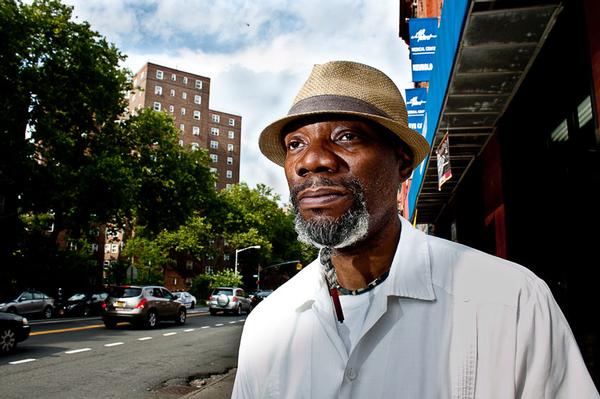
Photo by: Adi Talwar
Mychal Johnson, an outspoken critic of the FreshDirect plan to build a warehouse and parking lot in Port Morris, was not reappointed to community board 1.
At Community Board meetings, dissent is common. But it might be getting less so. When it comes to appointing board members and influencing the election of board officers in the Bronx, Borough President Ruben Diaz, Jr. and Councilmen Oliver Koppell and Jimmy Vacca recently have drawn fire for trying to elevate like-minded members.
In the past year, five Community Boards have seen appointments and board elections swayed by elected officials’ loyalties or differences in agenda.
Recently, Diaz attracted public attention for not reappointing Mychal Johnson, an outspoken critic of the FreshDirect plan to build a warehouse and parking lot in Port Morris.
“He saw it as a challenge to his authority and his position, and he didn’t like that challenge,” Johnson says of his FreshDirect activism, which started after his last term renewal. While a few other CB1 members oppose the project, Johnson led the fight, having helped found the resistance group South Bronx Unite. Last Wednesday, Community Board 1 voted 25-4 to endorse the FreshDirect plan.
Though the project is “as-of-right,” meaning it didn’t need CB1 approval, Johnson’s presence on the Community Board did give a higher profile to opponents of the deal, which would use millions in public subsidies to move jobs from Queens to the Bronx and, opponents say, bring more truck traffic to an already diesel-saturated neighborhood.
Serving at the pleasure of the BP
The City Charter dictates that Community Boards serve more of an advisory than a decision-making role in the city’s land-use and budget process. Members are appointed by the borough president; half of them come from nominations by local councilmembers. Board members can only be removed for cause—such as poor attendance—but can be replaced by the borough president for any reason once their term is up.
Last August, Diaz >replaced six members of CB9, which oversees Soundview, Castle Hill, Union Port and Parkchester, to be able to secure enough votes to oust District Manager Francisco Gonzalez, with whom the Bronx Times reports he had had a rough relationship.
In 2006, then-BP Adolfo Carrion ousted four members of CB4—which oversees Highbridge, Concourse and Mount Eden—after they obstructed his push to permit a new Yankee Stadium to be built on public parkland.
Diaz’s communications director, John DeSio, has said in a statement, “We make the selections based on how we believe people will represent both our office and their respective communities.” Diaz was unavailable for comment.
The case for cohesion
Koppell defended the role of the beep in community board composition.
“If they appoint well, they’ll have a group of people that are representative of the community and work harmoniously with elected officials,” he says.
In June, Koppell encouraged Diaz to remove Bob Abbott from CB8 (which oversees Fieldston, Kingsbridge, Kingsbridge Heights, Marble Hill, Riverdale, Spuyten Duyvil and Van Cortlandt Village), because in the race for board vice chair, Koppell wanted votes to help Steve Froot over Maria Khury, a supporter of his 2009 election opponent Tony Cassino. The councilman acknowledges the power play but claims it’s justified. “If you’re criticizing me for appointing my friend, who do you want me to appoint? My enemies?” he asks. “That’s just crazy. It’s going to be people I’m comfortable with.”
Diaz listened to Koppell and denied Abbott reappointment. But when it comes to community boards electing officers, elected officials don’t always win. Khury ended up securing the most votes in CB8. And Tony Vitaliano of CB11 (which oversees Allerton, Morris Park, Pelham Gardens, Pelham Parkway and Van Nest) > edged out Joe McManus—whom Diaz and Vacca supported—for chairman in December. Vacca was unavailable for comment.
Because the appointment process is ongoing, it’s not yet clear how many members of the Bronx’s 12 community boards were reappointed and how many were denied another term. But some appointments that have been publicized—like that in CB4 of Desiree Joy Frias, daughter of FreshDirect supporter and Bronx Overall Economic Development Corporation head Marlene Cintron—may invite suspicion. While DeSio couldn’t confirm how many vacant seats exist, a third of the community boards have 31 or fewer members—19 short of the standard 50.
Manhattan Borough President Scott Stringer saw flaws in the community board membership process when he came to office in 2006 and began reforms. An independent screening panel of community-based professionals, chosen by Stringer, now reviews the candidates before passing them on to Stringer for approval. Though the final step is the same—i.e, Stringer gets to pick the members—the panel favors merit and disfavors conflicts of interest.
“The Bronx, from my experience, always takes a little bit more time to catch up,” says Michael Brady, who was appointed to replace Johnson on Bronx Board 1. “It seems like it was a neglected borough for a very long time, and there are many systems put in place because it was a neglected borough. In order to continue to grow, we have to change.”
Who controls the boards?
With all community board members unsalaried, Brady says he believes they should be beholden to none except the community. The BP’s power of discretion, he says, can undermine this.
“If my opinions or my comments don’t necessarily agree with those that appointed me,” he says, “I should hope that’s why they appointed me. The whole concept of civil discourse is to have civil discourse.”
Admittedly, Johnson didn’t go out of his way to find common ground with Diaz: When the BP offered him a private meeting to discuss FreshDirect, Johnson refused unless the sit-down was open to the public.
Still, Johnson says, a mix of voices—not a monotone—is what a community needs. And the potential for being booted from the board hushes some of those voices. “It’s like this unspoken knowledge or fact that if you don’t agree with or oppose a project of someone who appointed you, there’s this fear that you may be removed,” he said. “This seems to be a totally undemocratic process.”
Vitaliano confirms that there’s “a fear of retribution.” But he also agrees with Koppell on the importance of cohesiveness.”If somebody has a problem, that problem is everybody’s problem,” Vitaliano says. “We’ve got to speak as one; we’ve got to stick together.”
He says that this philosophy has so far worked well and that he, Diaz and Vacca are back to being friends. “I don’t think they’ll be making phone calls this time,” Vitaliano says, referring to his pending re-election.


